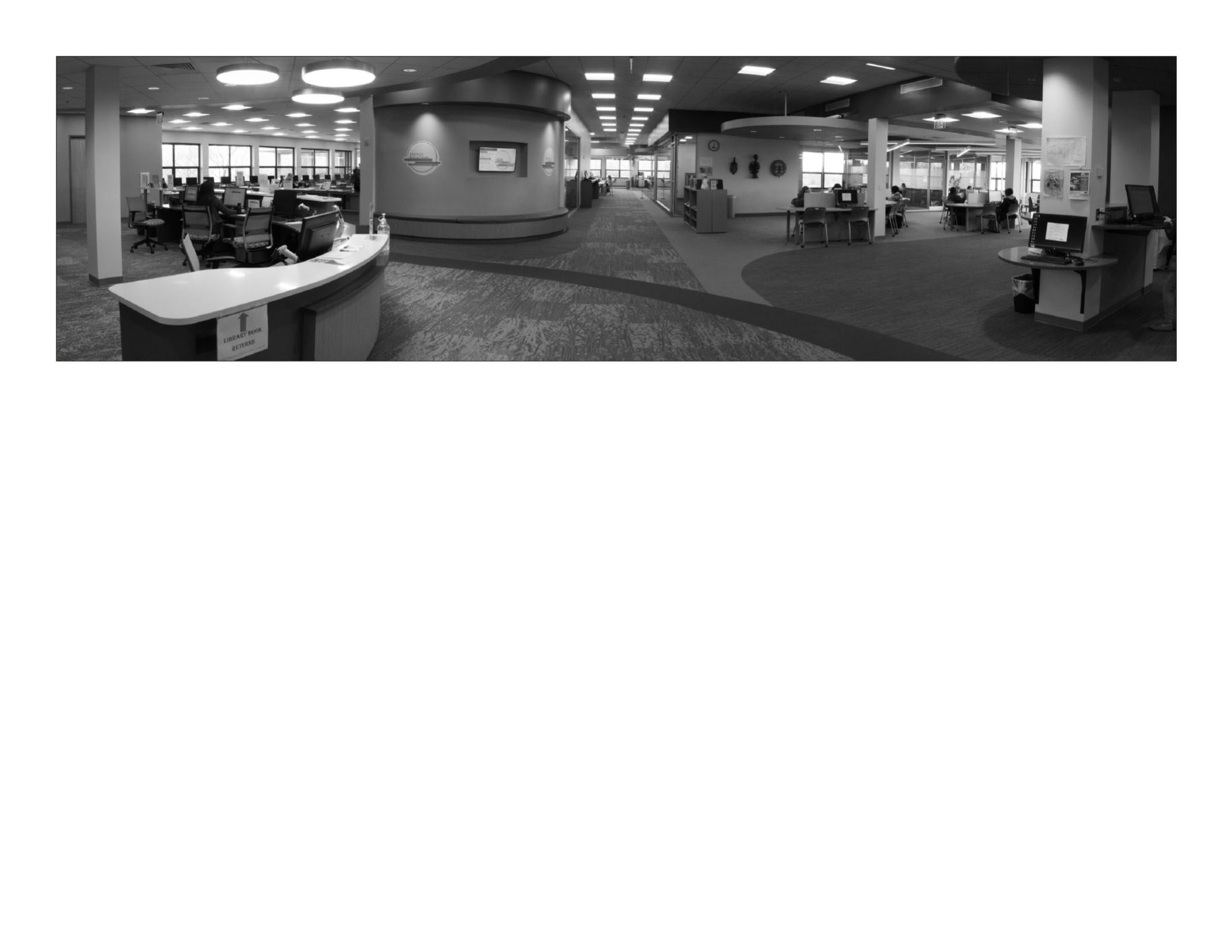

36
TUSCARORA REVIEW 2016
2016 TUSCARORA REVIEW
37
students in student learning. It’s a form of teaching, so it made sense for us to
be in the same space. After that, we went into a design phase, which lead to the
construction phase and to the opening in January [2016]. That concept is one of
the major ideas here. It’s not just having people in the same place. There’s a lot
of cross-training, integration of staff, and integration of services. And that’s very
efficient. So when students walk in, no matter what they need they can be quickly
shown to whatever person or service is needed. And there’s new technology. For
example, most of the study rooms are tech-equipped. The Makerspace is a digital
project workplace for students. We have about 40% more computers than we
did in the previous library. And then of course the layout and the design of the
furniture, the computers, the counters, and all of that. Every design consideration
was based on one question: what’s going to work best for the students? It’s turned
out quite well I think. The students, for the most part, are really happy with it. It’s
a gorgeous space, and that’s wonderful in and of itself, but it also works really well.
Tuscarora Review:
Are these changes the biggest that you’ve seen at
FCC with the library? You must have seen a lot during your career.
Mick:
Oh yeah, it’s amazing. It’s completely different than it was originally and
it’s much different than it was even five years ago. I think that among organizations
of all types, libraries have responded to changes in technology and changed
themselves perhaps more so than any other type of organization in terms of using
digital content and digital technology. Over 90% of the library’s information is
digital, which means there’s a lot more of it than was possible when we only had
print. All you had was what was in your room; now we have forty or fifty times
as much information. Another big thing is it’s available any time anywhere, so the
library is open on Sunday night. A lot of the use of these online databases occurs
on weekends and evenings, which is exactly when the campus is closed. So that’s
a major difference and a major benefit for students. The transition from a print
collection to an entirely digital collection has been enormous and that’s been
happening for about twenty years. We’ve tried to keep up with whatever new
capability came along. We went with it so that the students would have the best
and most up-to-date set of resources and services.
Tuscarora Review:
Along those lines, are there any other plans or hopes
that you see for the new Learning Commons?
Mick:
We’re going to continue doing more cross-training, so that it’s even
easier for students to get help. If a certain person isn’t available, the service can
still be provided. We expect to see more use of the Makerspace. The Makerspace
concept is very new and we’re still trying to figure it out ourselves. We expect to
see more use as more and more students become familiar with it. We’re always
on the lookout for some new digital content source that would be valuable. Just
two years ago we added two very important, very heavily used databases: one
was the database of statistics, which has been very popular, and then we added a
new journal database. We’re always on the lookout for new information sources,
and that’s ongoing.
Tuscarora Review:
How long before these renovations had the library
remained the same? What was the period like before the current renovations?
How long was the previous library in use?
Mick:
Well when I came to FCC in 1976, the library was on the second half
of ‘A’ Building [Annapolis Hall]. This building [Linganore Hall or “L” Building] was
built in 1994, and we came into this space. Last summer the renovations started
and took six months. The physical library was pretty much the same from 1994
until we closed [last year for renovations]. The real changes involved services
and information and that’s been ongoing. The first type of online, technology-
based function we had was back in about 1990. That was an online catalogue. At
that time, there used to be a bunch of trays and little cards and you looked up
information that way. It’s history now, but that’s what we had! Then, in the early
‘90s, that went away. Since then we’ve been obtaining more and more digital
Entrance view of the new Learning Commons.
















